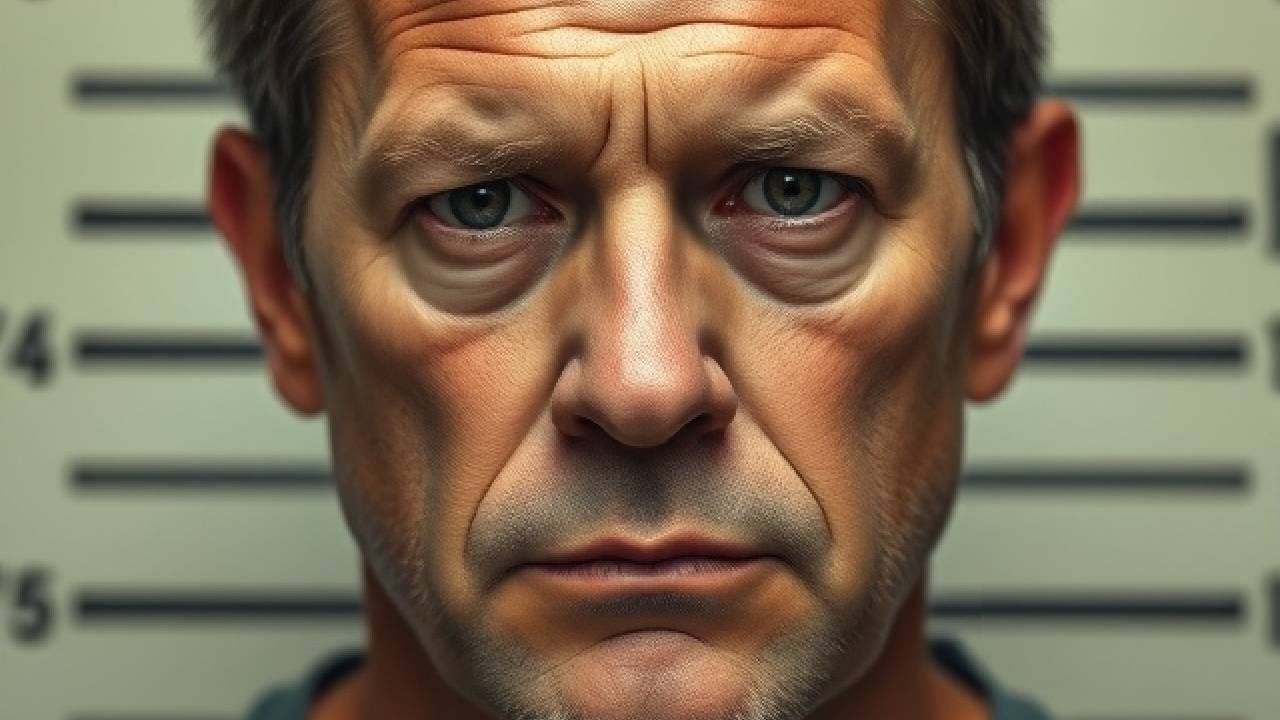They say a picture is worth a thousand words, but a mugshot, like that of Dennis Eugene Durden, can be worth a thousand stories. The unyielding gaze, the clinical backdrop, conveys an untold narrative; it’s an image that invites scrutiny. To experts, Dennis Eugene Durden Mugshot serve as a piece of history, often providing context in the annals of criminal justice.
As you delve deeper into the saga of Dennis Eugene Durden Mugshot, you encounter more than just a face on print. This mugshot isn’t merely a static image but a fragment of a timeline stretching through legal history. It reminds us that each mugshot has a broader context, frequently linked to societal issues at large.
Dennis Eugene Durden’s mugshot represents a critical record in legal archives, providing visual documentation vital to law enforcement. This image captures a specific moment, aiding in identification and background checks while influencing public perception and impacting the privacy of individuals involved in criminal proceedings.
Relevance of Dennis Eugene Durden’s Mugshot
In the world of criminal justice, Dennis Eugene Durden Mugshot holds essential information. It captures a moment in time that’s often overlooked. For Dennis Eugene Durden, his mugshot isn’t just a photo; it’s a snapshot of a narrative. Through this image, authorities and the public gain insight into his history. Mugshots like his continue to play critical roles in identifying and documenting individuals.
Mugshots are more than just visual records. They serve as a bridge, linking past actions to current circumstances. With Dennis Eugene Durden’s mugshot, authorities can track changes over time. This helps law enforcement manage criminal records efficiently. It’s a tool that aids in understanding a person’s background quickly.
Beyond the walls of the justice system, Dennis Eugene Durden Mugshot affect public opinion. These images are often featured in news articles, which the public consumes. In the case of Dennis Eugene Durden, his mugshot could influence perceptions. People may form opinions based on the expressions or conditions captured in the photo. This makes mugshots powerful beyond their initial intent.
While mugshots help in official duties, they can also hold personal consequences. For Dennis Eugene Durden, the mugshot might impact future opportunities. Employers or community members might view him through the lens of this image. Mugshots, therefore, extend their relevance into everyday life. They remind us of the lasting effects a single image can have.
Narrative Told through the Mugshot
Dennis Eugene Durden Mugshot is more than an image; it’s a storyteller. When looking at Dennis Eugene Durden’s mugshot, you can sense emotions and history. These images offer clues about a person’s life and past actions. The expressions captured speak volumes about present circumstances. It’s like reading a page from an open book.
The setting of a mugshot is also telling. The neutral background puts focus solely on the individual. For Dennis Eugene Durden, it might reveal stress or defiance in his expression. This simplicity adds layers to the story we’re interpreting. Every detail captured matters.
Mugshots can lead to assumptions. People might create their own stories about Dennis, based on his facial cues. This can affect how his community and others perceive him. There’s power in the unspoken narrative. Often, it drives opinions and beliefs.
Despite being just a photo, mugshots are windows into legal journeys. Each one has implications and reflects personal experiences. For Dennis Eugene Durden, this image is part of a larger puzzle. The narrative continues, influencing how he’s seen by others. The mugshot, therefore, becomes a pivotal chapter in a broader tale.
Role of Mugshots in Criminal History
Mugshots have been essential in criminal history due to their informative nature. They capture a person’s appearance at the time of arrest, creating a record that can be revisited. Initially, these images helped identify repeat offenders. Over time, mugshots have become a crucial tool in law enforcement. Their role has evolved alongside advancements in technology.
Mugshots aid various sectors beyond just law enforcement. Lawyers, journalists, and even historians use them to piece together past events. They are not just about capturing faces; they hold context and narratives. With each mugshot, such as Dennis Eugene Durden’s, history is being documented. The present echoes the stories of the past.
With the rise of digital databases, mugshots have become more accessible. This brings advantages and challenges. On the plus side, they can quickly help identify individuals involved in legal issues. However, concerns arise about privacy and public perceptions. Accessibility requires careful consideration of potential impacts.
Today, mugshots are part of a broader system to track legal histories. They help ensure justice by maintaining accurate records. For Dennis Eugene Durden and others, these images connect personal and public spheres of life. Mugshots, though simple, carry significant weight in the justice system. They remain pivotal in understanding and managing criminal history.
Public Perception about Dennis Eugene Durden
Public perception can be powerful, and for Dennis Eugene Durden Mugshot, it plays a significant role. When people see his mugshot in the media, they may form opinions quickly. These opinions might not always be fair, as the image doesn’t tell the entire story. The mugshot offers a snapshot but lacks context that many are unaware of. It’s important to approach such images critically.
Many factors affect how the public perceives an individual like Dennis. Media portrayal is one of the key influences. News stories or articles might paint him in a certain light, swaying opinions positively or negatively. This coverage often shapes how society understands or misunderstand his situation. It’s a profound impact that stretches beyond the image itself.
Individuals might react differently to Dennis’s mugshot based on personal biases. These biases are shaped by past experiences, media consumption, and cultural beliefs. For some, the mugshot might invoke feelings of sympathy, while for others, suspicion. This variance in reactions highlights how subjective public perception can be. Ultimately, it’s a diverse array of views.
Another significant aspect influencing public perception is social media. Platforms like Facebook and Twitter can amplify opinions quickly. For Dennis Eugene Durden, this means that public sentiment about him spreads rapidly. People comment, share, and create discussions based on a single mugshot. These online interactions further compound how the public perceives him.
The legal system should ideally guide perceptions, yet public opinions can diverge from legal realities. While Dennis Eugene Durden Mugshot might become a focal point, it doesn’t encompass his full legal journey. Understanding the balance between law and perception is essential. It’s about realizing that a mugshot is only the beginning of a broader conversation. This conversation blends public views with facts.
Impact on Society and Legal Affairs
Mugshots, like those of Dennis Eugene Durden, extend their influence beyond personal implications. In society, they can shape conversations around crime and justice. People might use these images to discuss broader themes of fairness and legal processes. Such discussions can lead to a deeper understanding or even misconceptions about the legal system. Their significance often reaches beyond the individual, affecting how communities perceive justice.
These images can also affect legal affairs by serving as evidence or records. For example, Dennis’s mugshot may help law enforcement officials track criminal history. It provides a visual record that complements written reports. This makes it easier for police to identify individuals during legal processes. However, their use must be balanced with concerns for privacy and rights.
The availability of mugshots online poses a challenge for privacy. Once released, these images can be accessed indefinitely, affecting personal reputations. Individuals, like Dennis, may find that their mugshot impacts job prospects or social standing. The constant digital presence underscores the need for responsible sharing. Society must consider how easily these records can shape a life.
Here are some societal effects commonly linked with mugshot dissemination:
- Public awareness of criminal activities
- Stereotyping and stigma
- Privacy concerns and debates
Understanding the legal and societal impact of mugshots requires a balanced perspective. While necessary for some legal functions, their broader effects can’t be ignored. They tell stories, shape opinions, and engage debates. Society and legal systems must work to ensure that these images serve their purpose without unnecessary harm. This balance is crucial for an equitable system.
Concluding Thoughts
In your exploration of Dennis Eugene Durden Mugshot, you’ve seen its multifaceted impact. It’s more than just an image; it’s a historical and social artifact. The mugshot captures moments that are significant in both legal and societal contexts.
As you reflect on the role these images play, consider their influence on public perception and legal processes. Mugshots, like Dennis’s, persist in shaping discussions about justice and privacy. They serve as a reminder of the complexities within the criminal justice system.
FAQ:
What is Dennis Eugene Durden Mugshot?
Dennis Eugene Durden Mugshot refers to the photographic record of Dennis Eugene Durden, that taken during his arrest or booking process.
What does Dennis Eugene Durden’s mugshot represent?
Dennis Eugene Durden’s mugshot represents a critical record in legal archives by providing visual documentation vital to law enforcement.
What role do Dennis Eugene Durden Mugshot play in criminal history?
Dennis Eugene Durden Mugshot have been essential in criminal history, capturing a person’s appearance at the time of arrest and creating a record that can be revisited.







